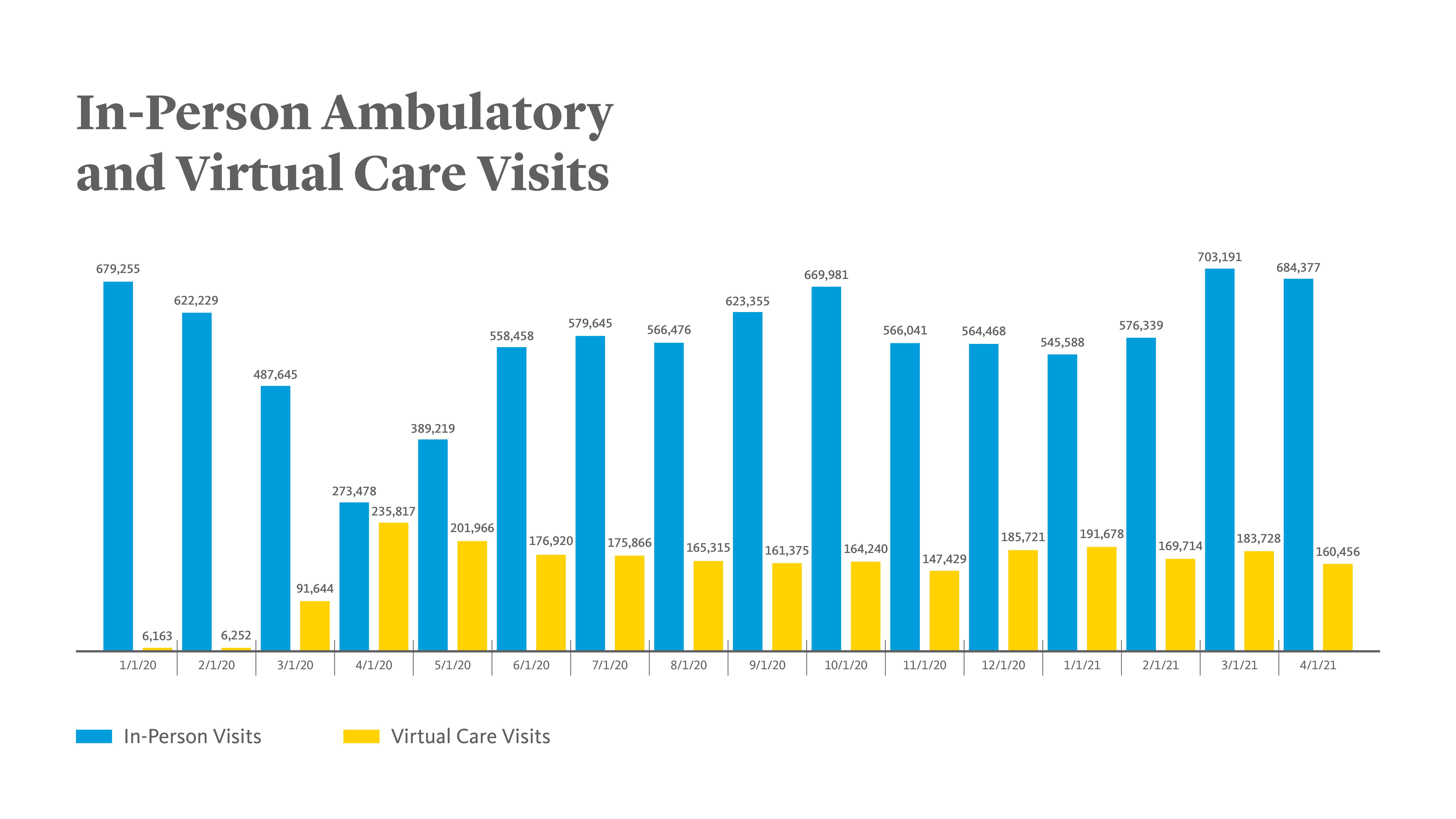In a state as large and populated as California, we know we can’t expect everyone to come in person to our six academic health centers. We also know that significant areas of the state are medically underserved.
That’s why University of California Health (UCH) is improving access to care on multiple fronts.
Virtual Care, or Telehealth
Virtual care (also known as telehealth or telemedicine) expanded dramatically during the pandemic out of necessity. When the pandemic made people reluctant to seek in-person care, telehealth rapidly evolved into virtual care.
During the pandemic, virtual care included direct-to-patient care between clinician and patient. It also served as a way to extend UC’s clinical expertise to physicians in emergency rooms and intensive care units at smaller hospitals who were flooded with COVID-19 patients but did not have the needed specialists.
From February 2020 through March of 2021, the direct-to-patient support model went from a systemwide average of 6,000 visits per month to an average of 137,000 per month. This rapid growth exposed patients and clinicians to the matured capabilities of virtual care, overcoming one of the historic barriers to adoption.
Even as in-person visits rebound, we believe the landscape is fundamentally more receptive to virtual care. We are strengthening our infrastructure to be able to use virtual care capabilities across a broader array of settings.
Reaching People Where They Live to Improve Health
To better target opportunities for improving health, UCH is investigating the effects of where someone lives on their health — and reaching out to groups who are negatively affected.
To do this, UCH is using the Area Deprivation Index, the California Healthy Places Index and Centers for Disease Control and Prevention’s Social Vulnerability Index combined with UCH patient records. In one example of this in practice, UCH is investigating how where someone lives contributes to how well their diabetes is controlled.
For areas where people are more likely to have diabetes that is not fully controlled, UCH is asking questions to get to the root causes. For instance, are economic factors that prevent people in this area from getting medications? Or, do they have to travel too far to get to the hospital?
Once we have these answers, we work together as a system to identify creative ways to intervene and improve the health of that population.
Expanding and Rebuilding Existing Campuses
UCH’s six academic health centers are continually exploring how they can best serve their communities through care delivery.
In some cases, that means renovating existing facilities to ensure they meet newer seismic safety standards, and in others, it means opening new locations to provide greater reach and services for their communities. Here are a few examples of current projects:
Providing Accessible Health Education and Training Across California
All UC health professional schools emphasize public service and caring for communities that have traditionally faced barriers to care or inadequate public health resources. But that’s not enough. We have opened new UC schools and programs, such as UC Riverside School of Medicine and UCSF School of Medicine Fresno branch campus, in areas where additional health care is needed. And, our UC Programs in Medical Education (UC PRIME) model of training equips the next generation of physicians for leadership and advocacy for groups who do not regularly have access to quality care.
Academic Medicine Across California
Each of our six academic health centers are actively engaged in finding new and improved ways to connect with people across California. University of California Health is committed to nothing less than the well-being of all Californians. As academic medicine teams, UCH physicians and researchers provide the most up-to-date care at each of their hospitals. And, they exchange this knowledge across our six academic health centers.

